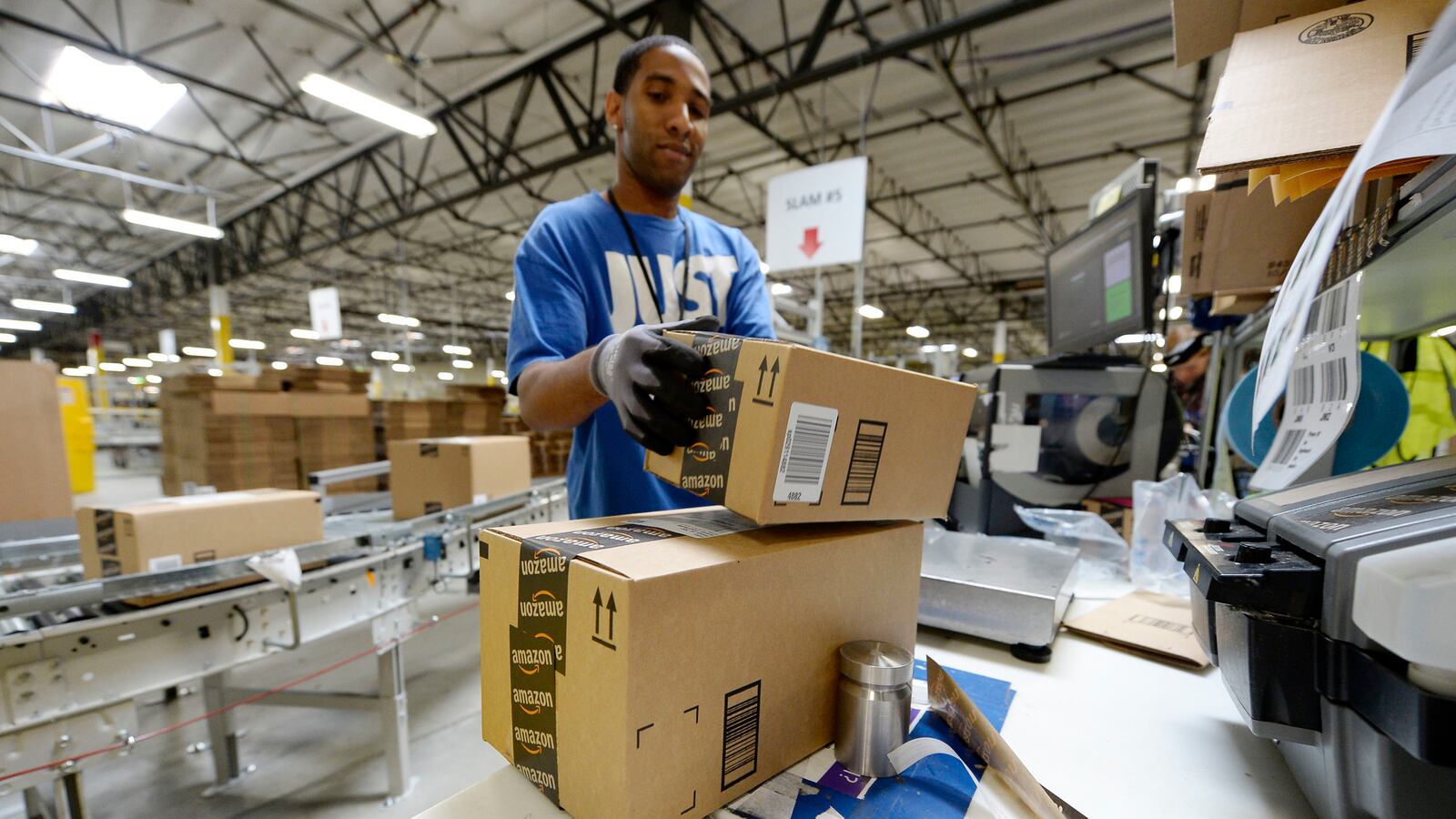Run for the hills! The U.S. economy, the mighty machine that powers global commerce, stalled out and seems to be headed in reverse. The Commerce Department Thursday reported its much-anticipated revision of growth for the first quarter of 2014. Upon further review, and taking new information into account, the green-eyeshade types at the Bureau of Economic Analysis revised the estimate down—from the previously reported, anemic annualized rate of .1 percent growth to a truly craptacular annualized decline of 1 percent. In other words, adjusted for inflation, the $17 trillion U.S. economy was actually smaller on March 31, 2014 than it was on December 31, 2013.

Or not. Don’t add “Brother Can You Spare a Dime” to your playlist just yet. The U.S. economy isn’t in recession and it’s not about to enter one.
What the hell is going on? The early months of 2014 were thankfully devoid of the sort of major shocks that have derailed economic growth in the past. Republicans in Washington didn’t threaten to shut down the government or default on the nation’s debt. No huge tax increase kicked in. Energy prices, while high, remained stable. And we weren’t jolted by sickening decreases in housing, stock, and bond markets. In fact, quite the opposite. The U.S. political front has been remarkably quiet. The economy added jobs steadily through the first quarter, and the stock market hovered around record highs. Interest rates remain low, and volatility is non-existent.
Two big forces are to blame for the reported decline—horrible weather and caution among businesses.
U.S. consumers, who account for about 70 percent of economic activity, actually are doing fine. Personal consumption expenditures rose 3.3 percent from the fourth quarter of 2013 to the first quarter of 2014.
But business investment fell 11.7 percent in the first quarter, led by sharp declines in residential investment (down 5 percent) and investment in structures (down 7.5 percent). Translation: the weather put a big damper on construction activity.
The real shocker was in business inventories. When companies sell goods and then restock their shelves aggressively in anticipation of further sales—i.e. build inventories—that adds to economic growth. When they are slower to add to inventories, either because existing supplies last longer due to slack sales demand, or because they’re simply cautious about the future, this reduced pace of inventory accumulation saps economic growth. And that’s precisely what happened in the first quarter. Changes in private inventories knocked down the rate of economic growth by 1.62 percent in the first quarter.
Now, should both these trends continue, then we could well be in trouble. Laypeople tend to regard two successive quarters of negative growth as a recession. The National Bureau of Economic Research in Cambridge, which is the official arbiter of recessions and expansions has a slightly more arbitrary definition. For NBER to declare a recession, a decline in economic activity has to be broad, pronounced, and persistent. But there’s no sign of that.
In fact, the data for the second quarter that we’ve received for April and May has been almost universally positive. U.S. auto sales in April were up 8 percent from the year before, and the economy added an impressive 288,000 jobs in the month. First-time unemployment claims are at their lowest level since August 2007. The economic consulting firm Macroeconomic Advisers, which calculates a monthly GDP growth rate, says that after the weather-related declines in December and January, the economy grew in both February and March. Earlier this month, it projected the economy would grow at a 3.7 percent annual rate in the second quarter.
In fact, Doug Handler, chief U.S. economist at HIS Global Insight, argues that “the nature of the revisions helps build the economic case for much stronger growth in the second quarter and through the remainder of the year.” Why? In April, developers began to make up some of the ground they lost in February and March. Housing starts, which had been sandbagged by poor weather, leapt sharply. And with consumer demand churning along, businesses will have to add more to their inventories than previously thought. “This reduces a potential drag to the economy and will bolster growth for the remainder of 2014,” Handler notes.
Since it started in the summer of 2009, this expansion has been fraught, spikey, and less-than-impressive. We always seem to be on the precipice of falling back into recession. And we always seem to shrug off the turbulence and noise. In the first quarter of 2011, the economy shrank at a 1.3 percent annual rate. But that didn’t presage a recession. In the fourth quarter of 2012, the economy grew at a pathetic .1 percent annual rate. That didn’t presage a recession, either.
We live in an age of long business cycles. The last two economic expansions lasted 73 months and 120 months, respectively. Within those long stretches of growth, there were quarters when the economy grew rapidly and quarters in which it shrank or flat-lined. A bar chart showing quarterly GDP growth resembles the teeth of a saw, not a picket fence. The key is to focus on the long-term. And the long-term trend of growth—unsatisfying, sub-par, sub-optimal, and insufficient growth—is still intact. Next week, the expansion will enter its 59th month since the end of the Great Recession.






